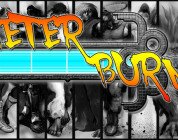Sony Developing PlayStation Remix, A Cloud-Based Emulation Service

Retro gaming, ftw!
In a move that could potentially trump Nintendo’s recent IP based upon remixed editions of classic installments, Sony is reportedly looking to develop something similar via cloud-based emulation in conjunction with Gaikai, who were acquired last year by Sony for $380 million.
The patent, called PlayStation Remix, was discovered by iGameResponsibly, who came across the filing by Sony Computer Entertainment. The language is very tech-heavy, but the essence of the document indicates the service would allow for “methods providing developers to ‘quite easily’ create mini-games within cloud-based, emulated legacy titles. It’s called ‘Suspending State of Cloud-based Legacy Applications’”.
Imagine being able to go through the original Crash Bandicoot game, reaching an end boss, and having the clear the level under specific conditions (i.e. timer). Through this application, the emulated titles could have new content directly incorporated into previously developed games that were released on the PSX, PlayStation 2, or even the PS3.
It’s very likely that SCE will concentrate their efforts on most of the older classics to be streamed via the PS4, which in effect, would greatly increase the longevity of these titles through new objectives, high scores, or some other type of format similar to what Nintendo introduced in NES Remix. Note this passage from the filing which states the following:
[0007] Mini-games often do not begin at traditional starting points that were used in the original game. For example, the mini-game may begin near the end of a level, just prior to facing a final opponent, or the boss of the level. A boss is an enemy-based challenge which is found in many video games. Bosses are generally seen at the climax of a particular section of the game, usually at the end of a stage or level. Due to the climactic nature of fighting a boss, mini-game designers may choose to use this section of the game as their starting point. In order to make the mini-game more challenging than the original version, the game designer may also want to limit the number of lives a player may use, or change other game parameters such as the amount of health the main character has remaining Other game scenarios may be chosen as starting points for a min-game. For example a mini-game may begin with the game player being the batter in a baseball game where there are two outs in the bottom of the ninth inning and the batter’s team is down by one run.
Of course, it remains to be seem how the pricing model, range of titles selected, and most importantly, how gamers will respond to this forthcoming development. Hey, any reason to revisit the classics is fine by me – great games should live on forever!
Source: iGameResponsibly
This application is presumably what will be used to stream classic games on the PS4. We’ll update this post with more information as it becomes available. The images below illustrate the application run-time environment.
A further description of the intention of the invention is as follows:
[0006] Finding new ways to play preexisting video games can increase the longevity of older games. Instead of replaying the same level or completing the same missions repeatedly, gamers often desire new challenges when replaying legacy games. In response to this need, game designers have begun to produce mini-games. Within a mini-game, the gamer can be instructed to complete new objectives or challenge their friends for high scores in a format that was not originally designed into the legacy game. Further, since the mini-game is derived from a legacy game, the gamer already knows the characters and basic components of the game, and is therefore more likely to play the mini-game.
[0007] Mini-games often do not begin at traditional starting points that were used in the original game. For example, the mini-game may begin near the end of a level, just prior to facing a final opponent, or the boss of the level. A boss is an enemy-based challenge which is found in many video games. Bosses are generally seen at the climax of a particular section of the game, usually at the end of a stage or level. Due to the climactic nature of fighting a boss, mini-game designers may choose to use this section of the game as their starting point. In order to make the mini-game more challenging than the original version, the game designer may also want to limit the number of lives a player may use, or change other game parameters such as the amount of health the main character has remaining Other game scenarios may be chosen as starting points for a min-game. For example a mini-game may begin with the game player being the batter in a baseball game where there are two outs in the bottom of the ninth inning and the batter’s team is down by one run.
[0008] However, in order to generate mini-games that start with these specific circumstances a game designer must reverse engineer the underlying code in each game and then rewrite the code to enable the mini-game to start under these specific conditions. This process is time consuming and expensive, because it may require multiple engineers to redevelop a single legacy game. Additionally since mini-games are shorter than full-length games, there is a need to produce mini-games in larger quantities.
Source: US Patent & Trademark Office
http://www.igameresponsibly.com/2014/01/02/sony-patents-playstation-remix-cloud-based-emulation/





Sign In